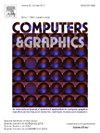3D reconstruction and precision evaluation of industrial components via Gaussian Splatting
IF 2.8
4区 计算机科学
Q2 COMPUTER SCIENCE, SOFTWARE ENGINEERING
引用次数: 0
Abstract
Traditional 3D reconstruction methods for industrial components present significant limitations. Structured light and laser scanning require costly equipment, complex procedures, and remain sensitive to scan completeness and occlusions. These constraints restrict their application in settings with budget and expertise limitations. Deep learning approaches reduce hardware requirements but fail to accurately reconstruct complex industrial surfaces with real-world data. Industrial components feature intricate geometries and surface irregularities that challenge current deep learning techniques. These methods also demand substantial computational resources, limiting industrial implementation. This paper presents a 3D reconstruction and measurement system based on Gaussian Splatting. The method incorporates adaptive modifications to address the unique surface characteristics of industrial components, ensuring both accuracy and efficiency. To resolve scale and pose discrepancies between the reconstructed Gaussian model and ground truth, a robust scaling and registration pipeline has been developed. This pipeline enables precise evaluation of reconstruction quality and measurement accuracy. Comprehensive experimental evaluations demonstrate that our approach achieves high-precision reconstruction, with an average Chamfer Distance of 2.24 and a mean F1 Score of 0.19, surpassing existing methods. Additionally, the average scale error is 2.41%. The proposed system enables reliable dimensional measurements using only consumer-grade cameras, significantly reducing equipment costs and simplifying operation, thereby improving the accessibility of 3D reconstruction in industrial applications. A publicly available industrial component dataset has been constructed to serve as a benchmark for future research. The dataset and code are available at https://github.com/ldj0o/IndustrialComponentGS.

基于高斯溅射的工业部件三维重建与精度评价
传统的工业部件三维重建方法存在很大的局限性。结构光和激光扫描需要昂贵的设备,复杂的程序,并且对扫描完整性和闭塞仍然敏感。这些限制限制了它们在预算和专业知识有限的环境中的应用。深度学习方法降低了硬件要求,但无法用真实世界的数据准确地重建复杂的工业表面。工业部件具有复杂的几何形状和表面不规则性,这对当前的深度学习技术构成了挑战。这些方法也需要大量的计算资源,限制了工业实现。提出了一种基于高斯溅射的三维重建与测量系统。该方法结合了自适应修改,以解决工业部件独特的表面特征,确保精度和效率。为了解决重建高斯模型与地面真值之间的尺度和差异,开发了一种鲁棒的尺度和配准管道。该管道能够精确评估重建质量和测量精度。综合实验评价表明,该方法实现了高精度重建,平均Chamfer Distance为2.24,平均F1 Score为0.19,优于现有方法。平均尺度误差为2.41%。该系统仅使用消费级相机即可实现可靠的尺寸测量,大大降低了设备成本并简化了操作,从而提高了工业应用中3D重建的可访问性。构建了一个公开可用的工业组件数据集,作为未来研究的基准。数据集和代码可在https://github.com/ldj0o/IndustrialComponentGS上获得。
本文章由计算机程序翻译,如有差异,请以英文原文为准。
求助全文
约1分钟内获得全文
求助全文
来源期刊

Computers & Graphics-Uk
工程技术-计算机:软件工程
CiteScore
5.30
自引率
12.00%
发文量
173
审稿时长
38 days
期刊介绍:
Computers & Graphics is dedicated to disseminate information on research and applications of computer graphics (CG) techniques. The journal encourages articles on:
1. Research and applications of interactive computer graphics. We are particularly interested in novel interaction techniques and applications of CG to problem domains.
2. State-of-the-art papers on late-breaking, cutting-edge research on CG.
3. Information on innovative uses of graphics principles and technologies.
4. Tutorial papers on both teaching CG principles and innovative uses of CG in education.
 求助内容:
求助内容: 应助结果提醒方式:
应助结果提醒方式:


